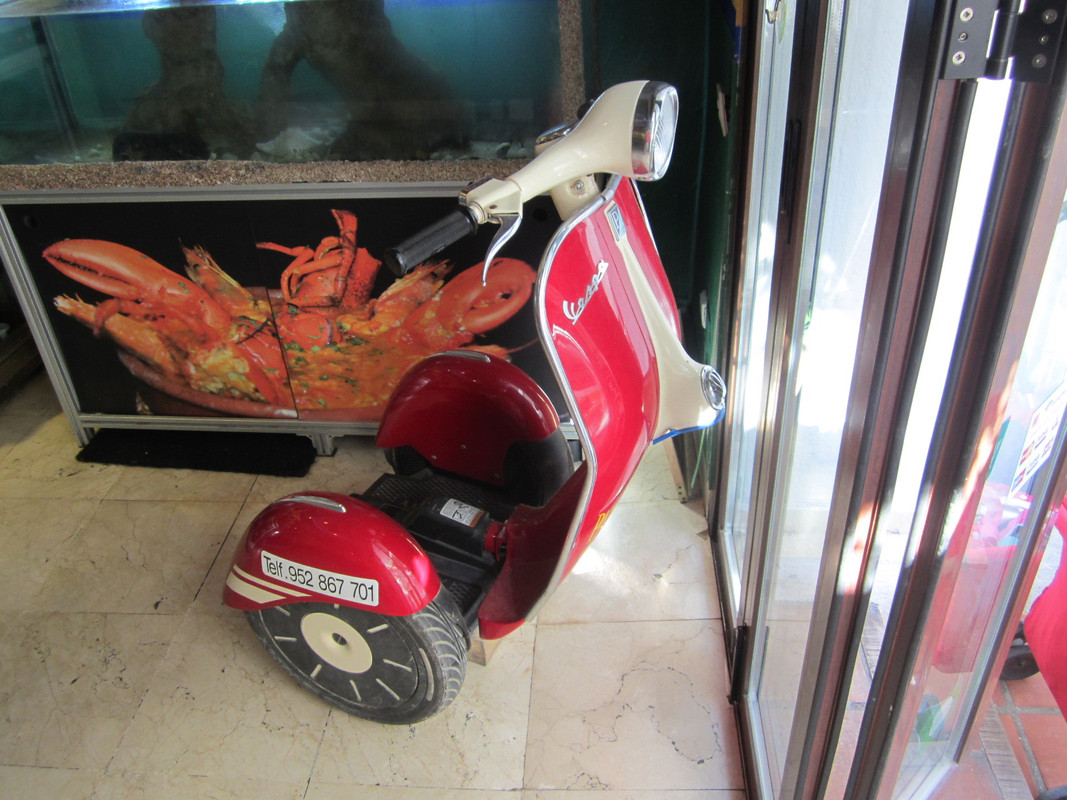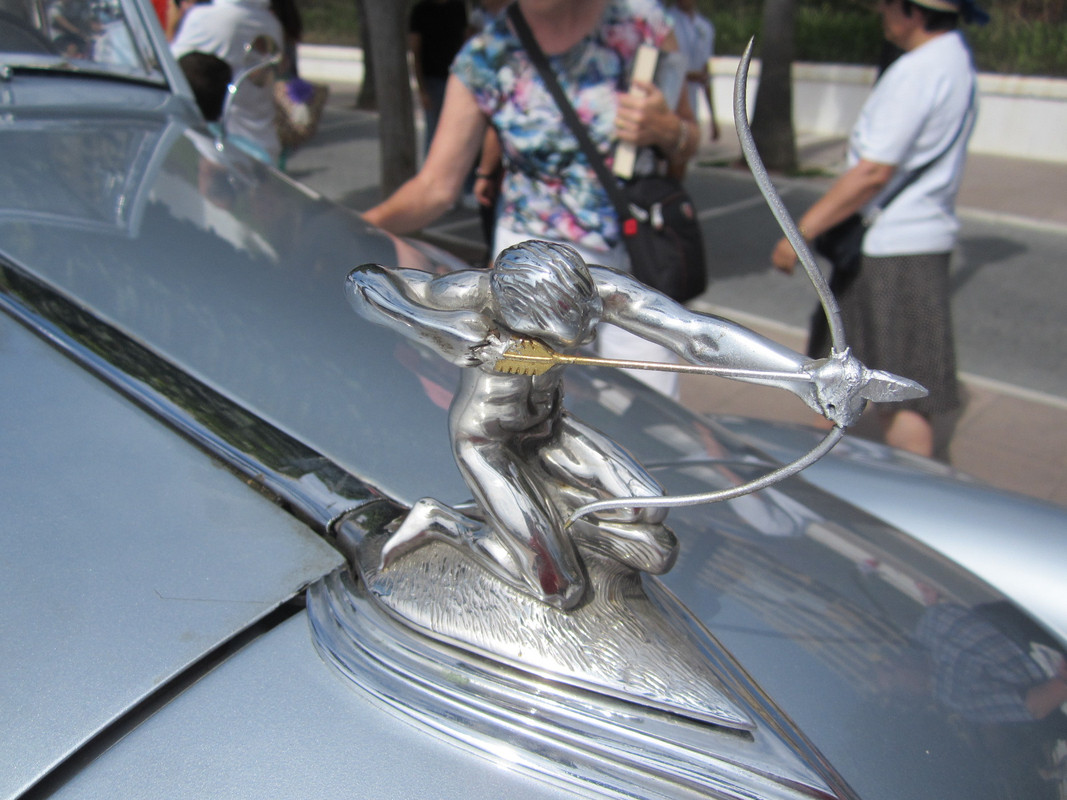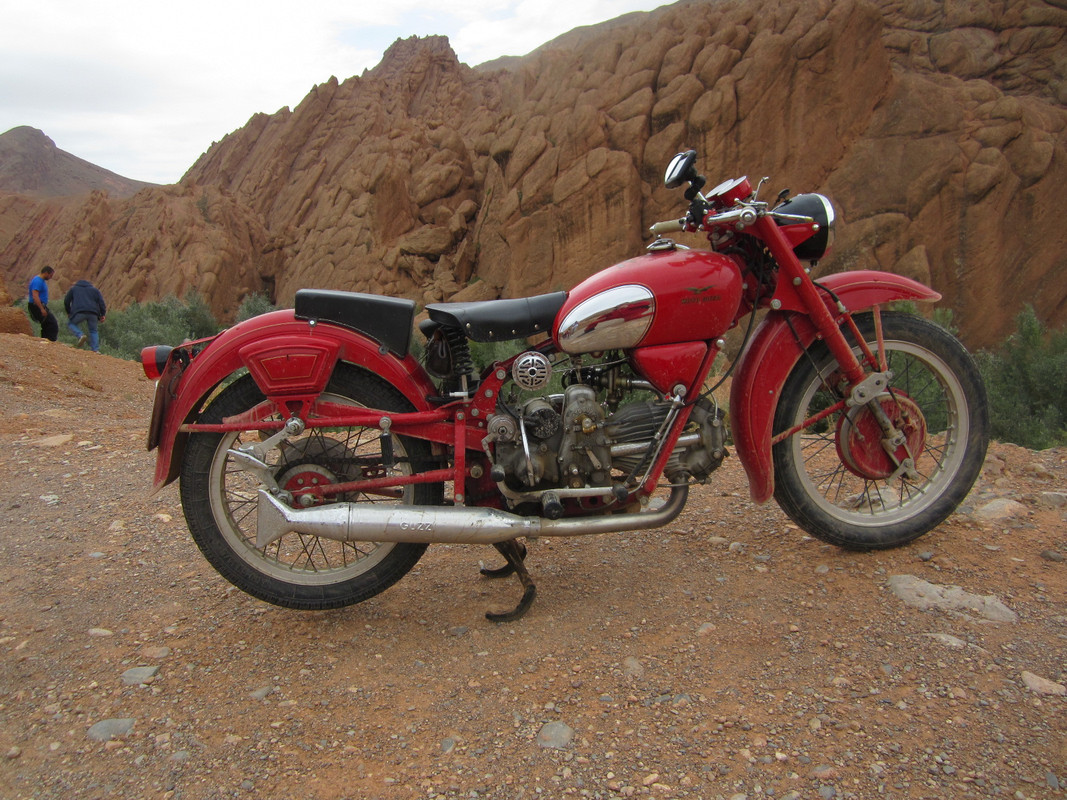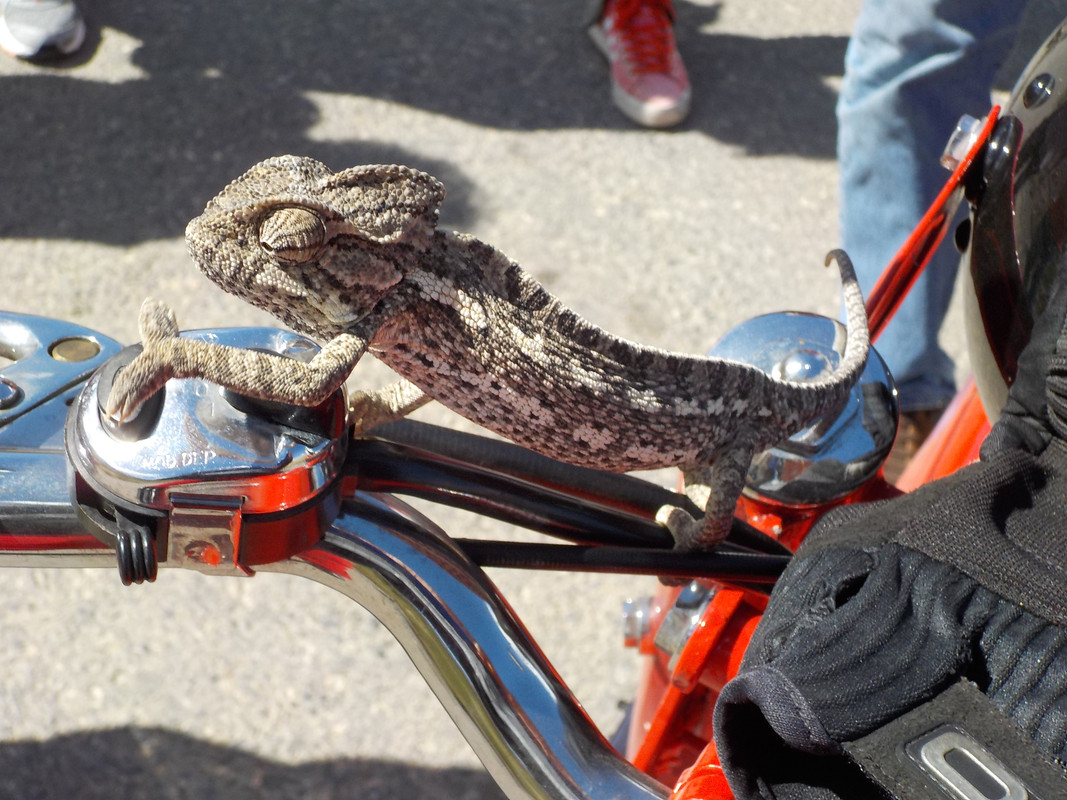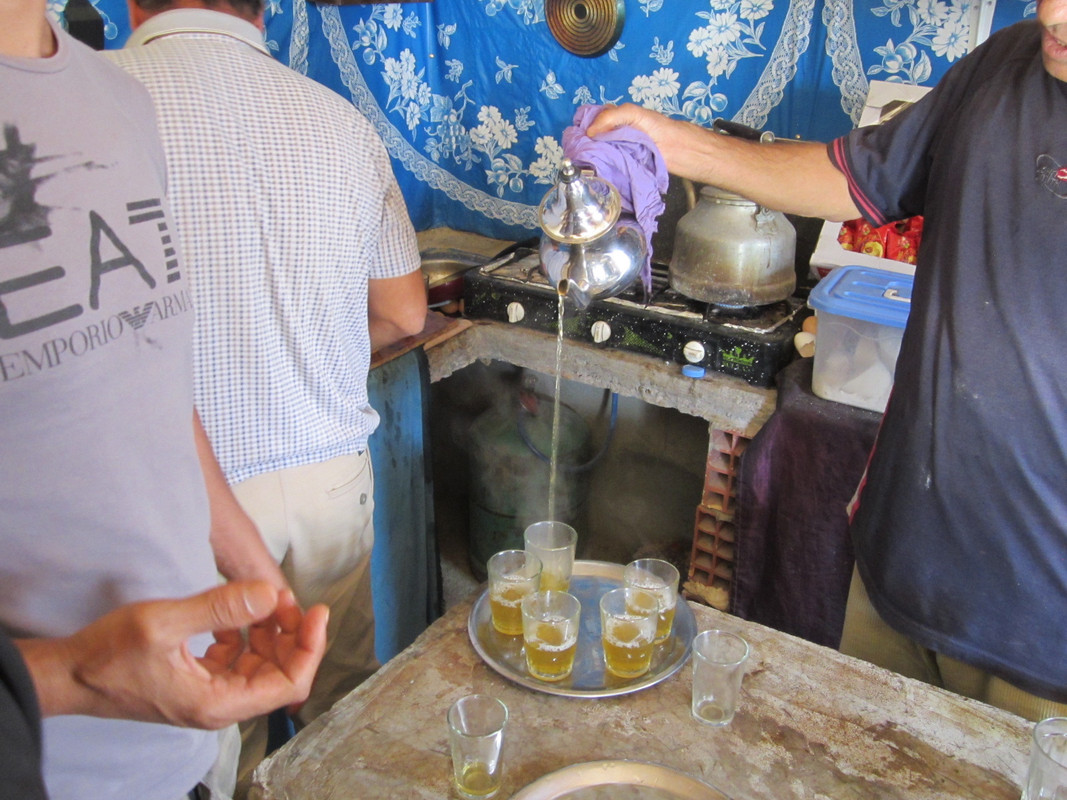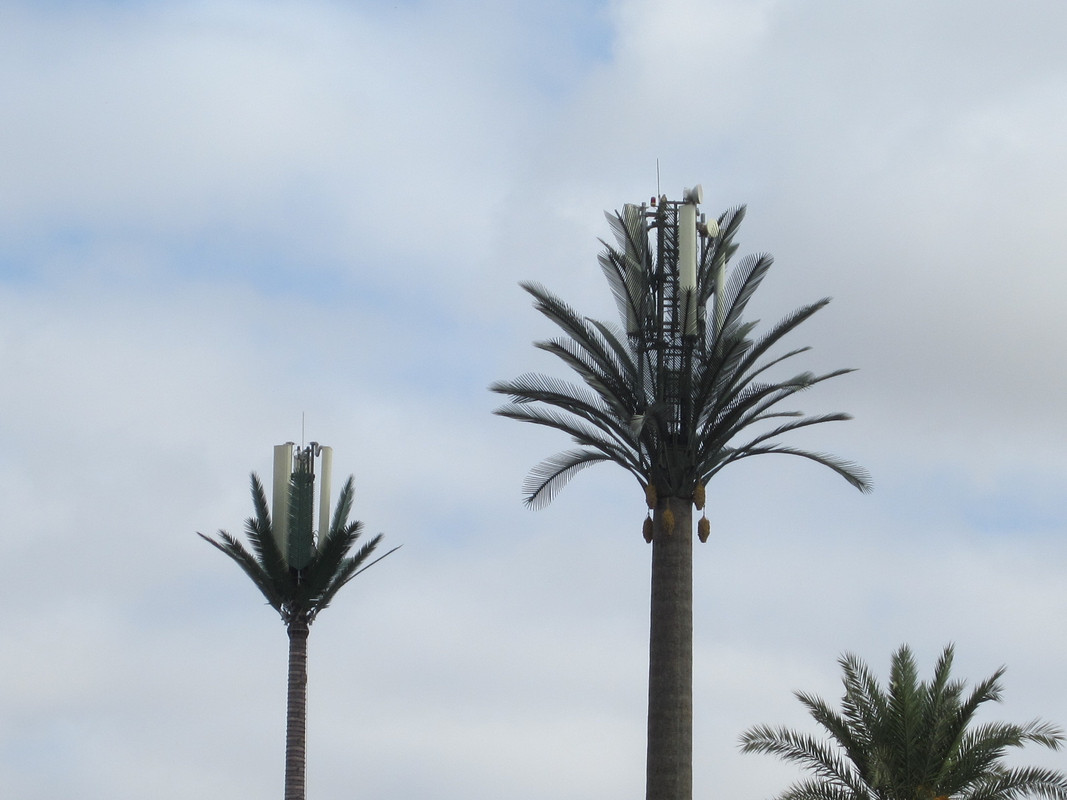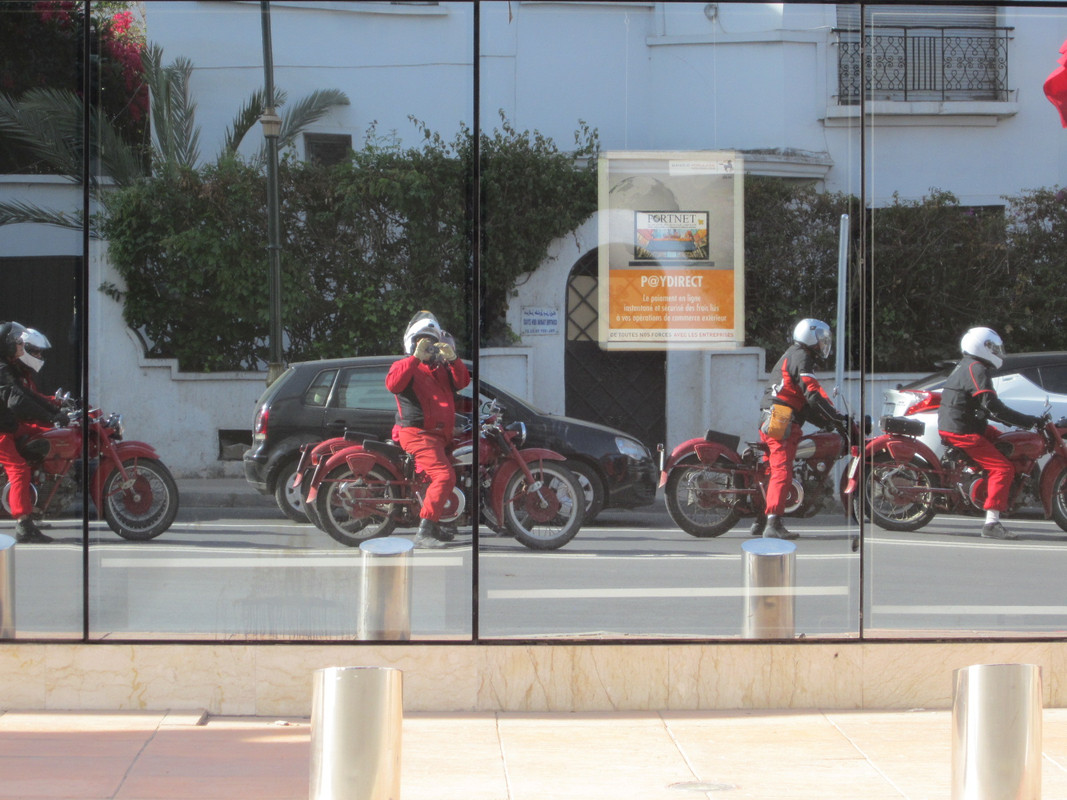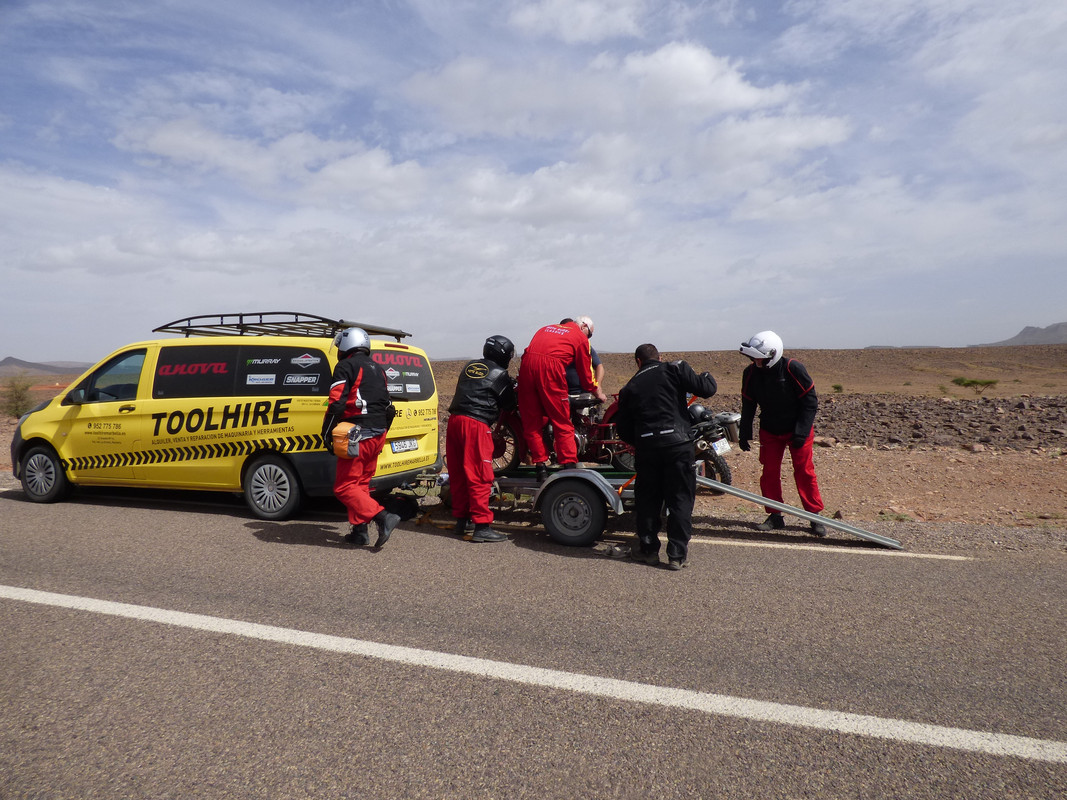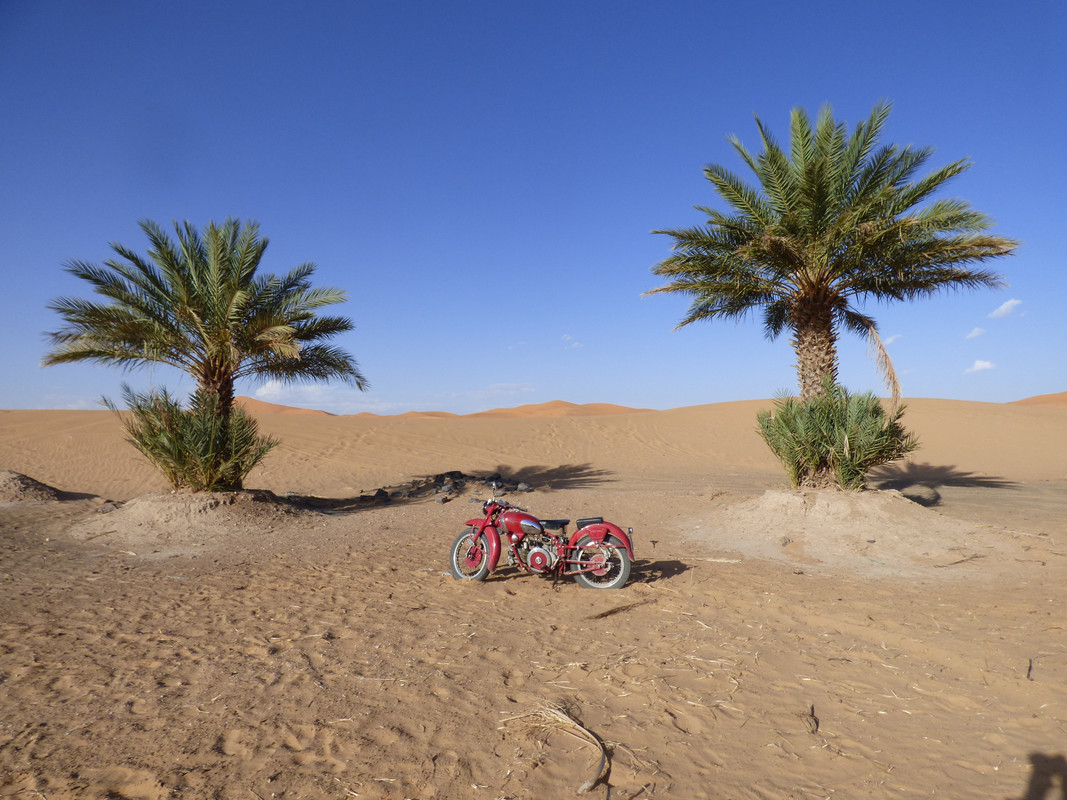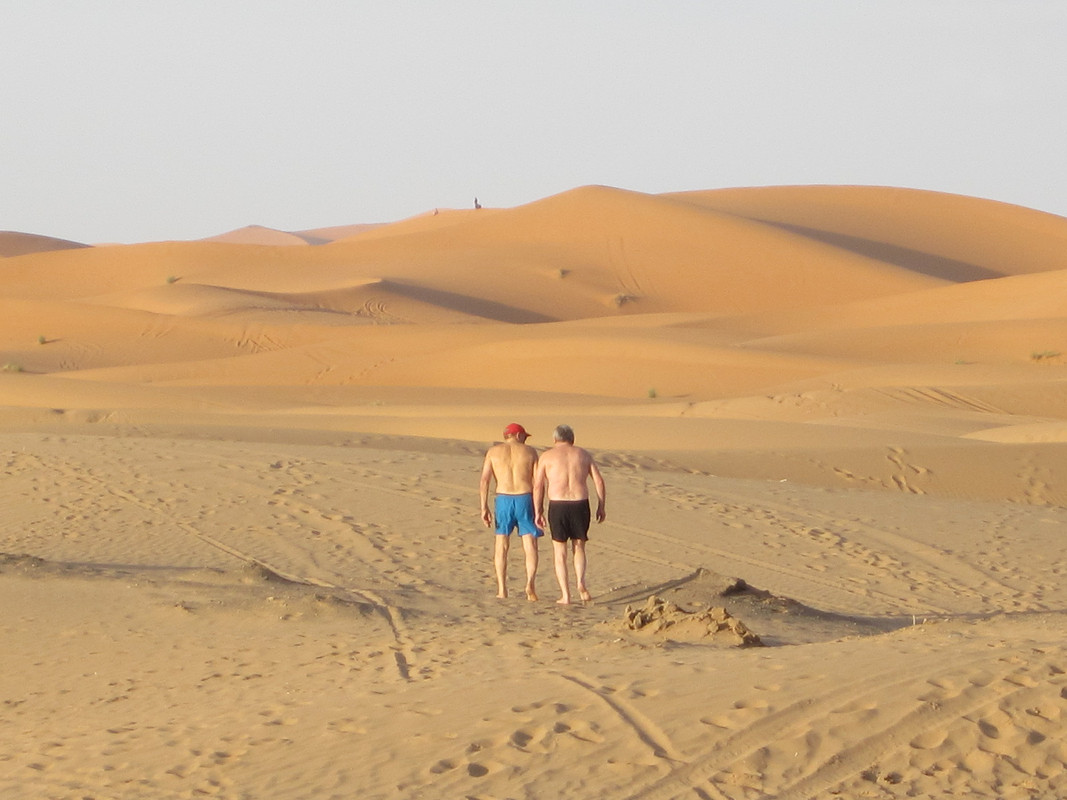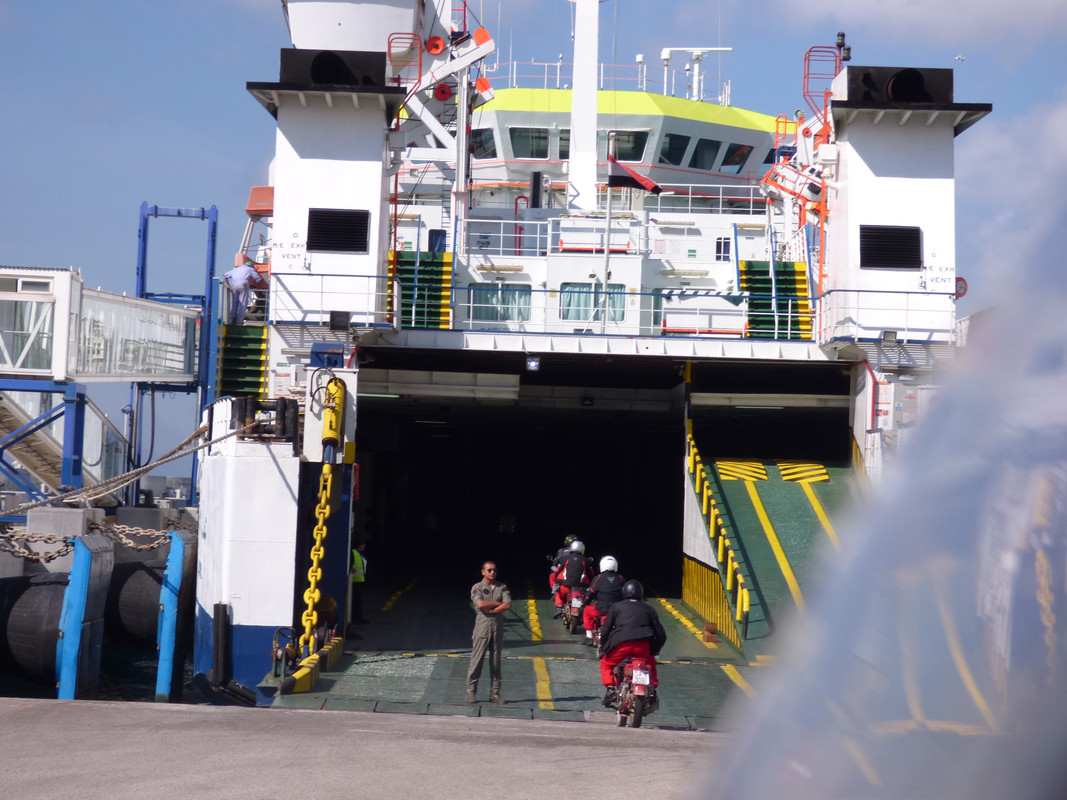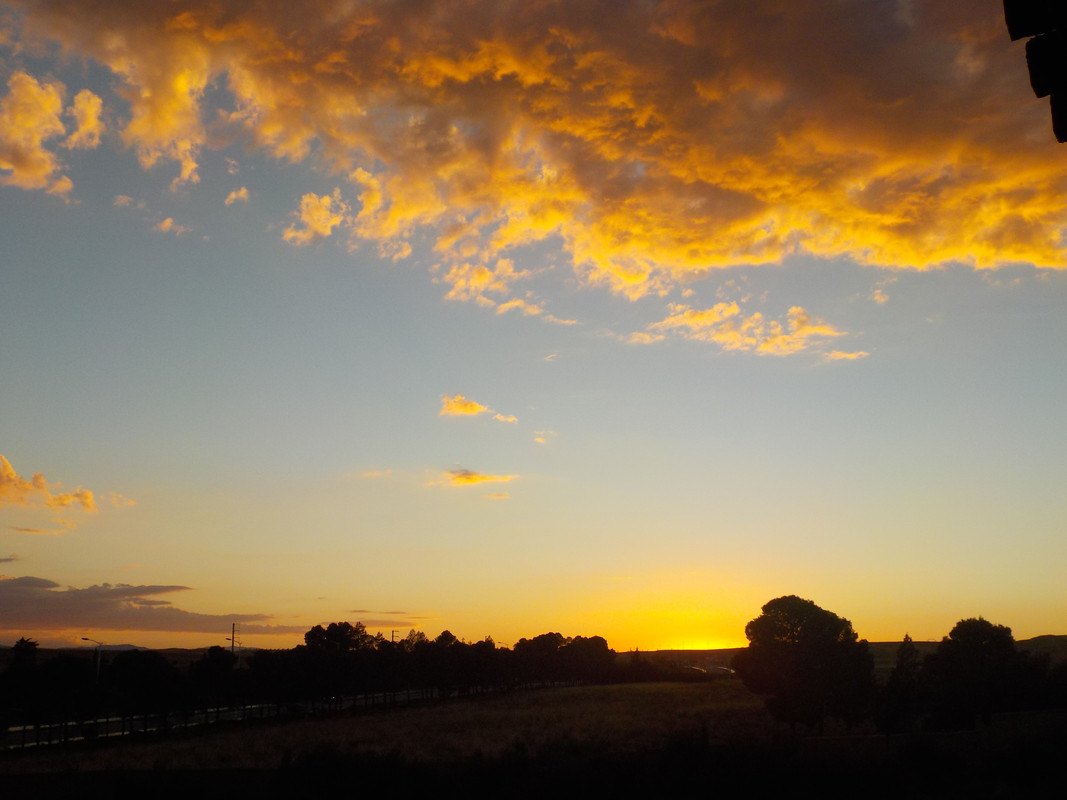From our friend Patrick H...
 I tour annually with a vintage moto club from Italy. I produce
I tour annually with a vintage moto club from Italy. I produce
condensed photo reports at the end of each tour. In October 2018 we
toured Morocco. Enjoy the ride! Link to below on his site HERE.
Modern Morocco is a mixture of cultures. The ancient Berber culture developed throughout most of north and west Africa over thousands of years. During the middle ages, the Berbers were dominated by Arabs from the middle east. The narrowness of the Gibraltar Strait provided plenty of opportunity for trade and cultural blending from Europe. The ethnic Berbers are still very proud of their more-ancient heritage on this land. They have their own language and written alphabet apart from the dominant Arabic political culture.
Our Club, Moto Guzzi Classics, is centered in the Veneto region of northeastern Italy. One of our founding Club members, GianLorenzo Bono, had a family connection in Marbella on the Mediterranean coast of Spain. It was he who had developed the idea and then the plan to cross the Strait of Gibraltar and tour Morocco in North Africa. Alas, as fate dictated, Bono died suddenly earlier this year. As a Club, we decided to continue with the plan and complete the African adventure which Bono had envisioned. I was honored by his family with an invitation to utilize Bono's own, favorite Moto Guzzi Falcone so a part of his spirit would complete the tour. This is the precious Falcone of Bono in front of our Marbella hotel. Notice how clean, shiny, pristine it is. Won't last long like this.

Regina and I had arrived a few days early to relax and reset our brain clocks to European time. We were thus able to do some walking tours and enjoy the historic and resort areas around Marbella. I found this interesting mashup between an old Vespa upright and a modern Segway power train parked in a small shop in Old Town Marbella. Quite an interesting and artistic production.
Once our Club was all together we visited the promenade on the beach at Marbella. Just in time for the local police to escort a tour of about 75 vintage cars along the pedestrian stip. They stopped for lunch just adjacent to us so we had plenty of time to inspect all the old beauties. A standout was a Pierce Arrow with this wonderful hood ornament.
Off to Africa. An easy 100km to the port at Algeciras to meet our ferry. Easy to get there. Not so easy to get onto the ferry. We had a morning lecture about how to navigate the swing arm barricades at the port driveways. One rider wasn't paying attention at the meeting and ended up driving through and snapping off the barrier arm. Ooops. Lets get out of here quickly. Getting on the ferry requires that you have a personal ticket so you stand in line to buy one. But, your moto also needs a ticket. The same guy is selling the vehicle tickets but he won't do both at once. After you buy the personal ticket you go to the back of the line to come through again to buy your moto ticket. Now queue up to ride onto the ferry. But wait, someone has to inspect that you actually have a passport which will allow you to go to Africa. Fine. We're all on board. But wait! Now we have to visit another inspector who verifies that you actually have travel documents to get you into Morocco where the ferry lands. Once ashore, we immediately head to a cash exchange and line up to buy Moroccan Dirham cash. Immediately next door we have to line up to buy roadway liability insurance as our European policies are no longer valid. Finally, no more lines and we are on the road.
Mike Peavey of Boston and me at a rural roadside National Park overlook.

Just a few days into the tour, the Bono Falcone still looking pretty good but getting a little dirty.
Our team of riders at the sand dunes destination.

The Moroccans have taken the task of loading trucks and elevated it to an art form. If there is any way to fit another piece of cargo, they will manage to load and secure it. Secure being a somewhat variable term! Here is a daily delivery of feed hay for the tourism camels.
We had to follow this slow truck for quite some time. Took bravery to pass him. Most did it on a straightaway. I'm a chicken. I waited for my opportunity on a right leaning cambered curve.

Morocco is not yet up to modern standards on domestic water quality. We were advised to always have bottled water available for drinking and brushing teeth. The only use of domestic water was for bathing and cooking. Perhaps the main contamination risk comes from eating fruits or vegetables which have been rinsed with domestic water. Don't eat the unpeeled grapes. OK to eat the desert melon because you are only consuming the internal portion. One of our riders did succumb to a serious intestinal attack. Stopped and collapsed on the side of the road before it got bad enough for him to faint away. We had to break off from the tour and take him to a local clinic. The doctor stuck him in bed for a few hours with an IV drip for rehydration and provided a few corrective drugs. $75 cost. Fit as a fiddle the next day. The unfortunate downfall was that I became hyper-sensitive about my own innards. The least amount of intestinal tweak or noise got me thinking if I would be the next victim.
An old rural town adjacent to a lower community garden oasis. With no utilities of any sort. The government eventually built a very nearby replacement town at the other end of the oasis and moved everyone over leaving the older town abandoned. Wow, what an improvement. Even some satellite TV antennae in there. Morocco is a kingdom by rule. The population is very happy with and very proud of their King Mohammed VI. He has promoted many reforms and modernizations.

We found this character hitchhiking along a back road. Had a little fun with him before sending him on his way. Not sure he appreciated the short ride.
Over the length of the tour we confronted perhaps six or seven areas where flash flood streams were crossing the roadway in a substantial way. Sometimes with quite a bit of force that would push us off at an angle and risk running off the now invisible side of the road. This particular crossing was about 15" deep. Enough to drown my motor and force me to dismount and push to the far side. Alas, my waterproof boots are only 12" high so I had an internal flood for the remainder of the day. Took about 15 minutes to get re-started. So much for the gentle care to Bono's pristine motorbike.

Here we have a rather typical view of a rural roadway running through town. Note that there is a substantial dirt area to each side of the pavement. This is for use by the numerous service donkeys, pedestrians, 3-wheel trucks, etc. Note also that constant truck traffic tends to break away the edges of the asphalt pavement leaving a narrow center with a stripe in it. Oncoming trucks tend to take the entire center of the road leaving you no option but to head off into the dirt. Each of these towns will have a small school. Lots of children line the streets before or after school. As you ride through, they jump to the middle of the road in order to get a 'high five' as you pass. Easy if you are traveling alone and you surprise them. Not so easy in a line of ten when they can see down the line and predict more opportunities. Quite scary. I sure don't want to run over some child in a foreign country!

We finally met a water crossing which had completely taken away the road. We were stuck until a local wandered by and advised us about a rough, desert bypass of about five miles which would take us around the washout. How nice to have a guide who speaks Arabic!

Intrepid bicycle tourists!

The picturesque hairpins at the head of the Dades Gorge. We had to drive up and down this section several times in order to stage a nice video of our motos on tour.

These poor little donkeys are the predominant local cargo transport. Loading one of these poor fellows is only surpassed by the way they load real trucks. Not very many rural people own motorized transport. Motorcycle based 3-wheel trucks are very common.

Classic Berber dress (except for the tennis shoes). These dudes got really angry if you snapped a photo without paying up first. Hard for them to control an audience of 15 people.

The main form of cooking utensil, the tajine. These clay pots produce daily meals of sauteed vegetables, olives, and scrambled eggs. The Berber omelet.

Tea is very sweet and heavily minted. Obligatory to pour it from a very high altitude and show off your aiming skills. They are actually pretty good at it and I never saw a splash or spill.

condensed photo reports at the end of each tour. In October 2018 we
toured Morocco. Enjoy the ride! Link to below on his site HERE.
Modern Morocco is a mixture of cultures. The ancient Berber culture developed throughout most of north and west Africa over thousands of years. During the middle ages, the Berbers were dominated by Arabs from the middle east. The narrowness of the Gibraltar Strait provided plenty of opportunity for trade and cultural blending from Europe. The ethnic Berbers are still very proud of their more-ancient heritage on this land. They have their own language and written alphabet apart from the dominant Arabic political culture.
Our Club, Moto Guzzi Classics, is centered in the Veneto region of northeastern Italy. One of our founding Club members, GianLorenzo Bono, had a family connection in Marbella on the Mediterranean coast of Spain. It was he who had developed the idea and then the plan to cross the Strait of Gibraltar and tour Morocco in North Africa. Alas, as fate dictated, Bono died suddenly earlier this year. As a Club, we decided to continue with the plan and complete the African adventure which Bono had envisioned. I was honored by his family with an invitation to utilize Bono's own, favorite Moto Guzzi Falcone so a part of his spirit would complete the tour. This is the precious Falcone of Bono in front of our Marbella hotel. Notice how clean, shiny, pristine it is. Won't last long like this.
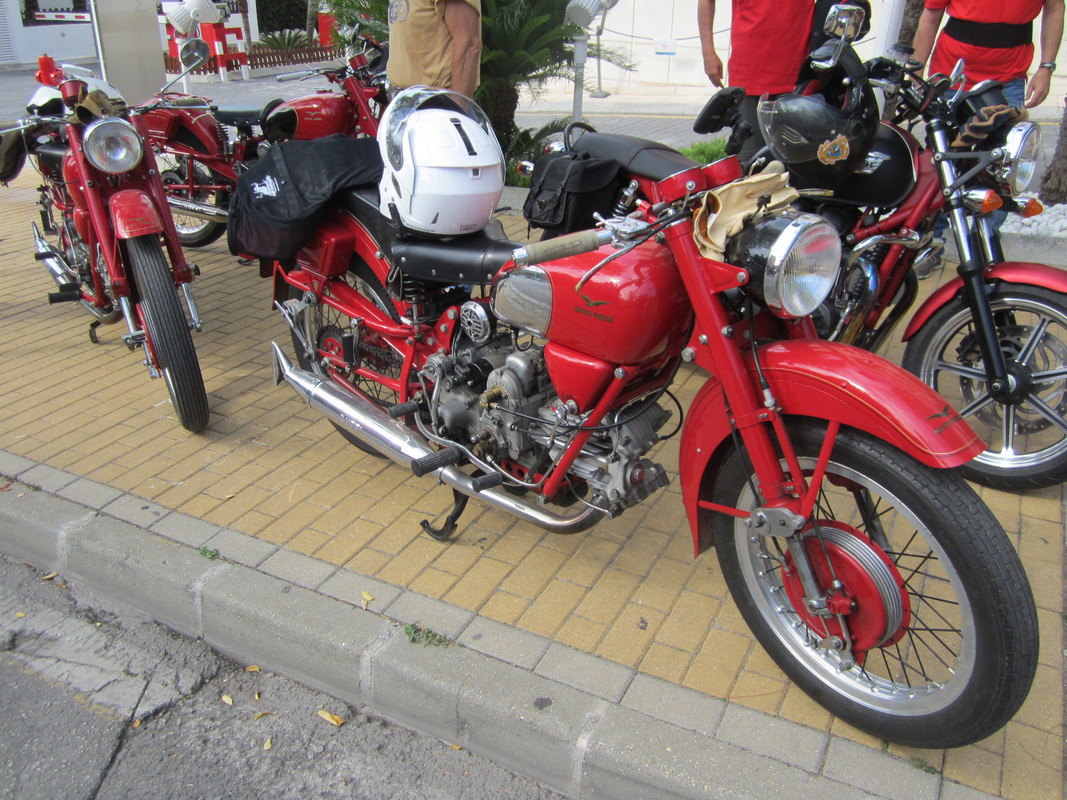
The motorbikes were crated and trucked from Italy to Marbella, Spain. We all flew in met directly there. Our first few days of organizing, shake-down, and touring were there in coastal Spain. Regina and I flew from California. Mike Peavey flew from Boston. Roberto and Iris Rossi drove a T3 Guzzi down from Switzerland. The remaining Club members flew in from Italy. Our mechanic had never been on an airplane so it was quite a serious challenge for him.Regina and I had arrived a few days early to relax and reset our brain clocks to European time. We were thus able to do some walking tours and enjoy the historic and resort areas around Marbella. I found this interesting mashup between an old Vespa upright and a modern Segway power train parked in a small shop in Old Town Marbella. Quite an interesting and artistic production.
Once our Club was all together we visited the promenade on the beach at Marbella. Just in time for the local police to escort a tour of about 75 vintage cars along the pedestrian stip. They stopped for lunch just adjacent to us so we had plenty of time to inspect all the old beauties. A standout was a Pierce Arrow with this wonderful hood ornament.
Off to Africa. An easy 100km to the port at Algeciras to meet our ferry. Easy to get there. Not so easy to get onto the ferry. We had a morning lecture about how to navigate the swing arm barricades at the port driveways. One rider wasn't paying attention at the meeting and ended up driving through and snapping off the barrier arm. Ooops. Lets get out of here quickly. Getting on the ferry requires that you have a personal ticket so you stand in line to buy one. But, your moto also needs a ticket. The same guy is selling the vehicle tickets but he won't do both at once. After you buy the personal ticket you go to the back of the line to come through again to buy your moto ticket. Now queue up to ride onto the ferry. But wait, someone has to inspect that you actually have a passport which will allow you to go to Africa. Fine. We're all on board. But wait! Now we have to visit another inspector who verifies that you actually have travel documents to get you into Morocco where the ferry lands. Once ashore, we immediately head to a cash exchange and line up to buy Moroccan Dirham cash. Immediately next door we have to line up to buy roadway liability insurance as our European policies are no longer valid. Finally, no more lines and we are on the road.
Mike Peavey of Boston and me at a rural roadside National Park overlook.
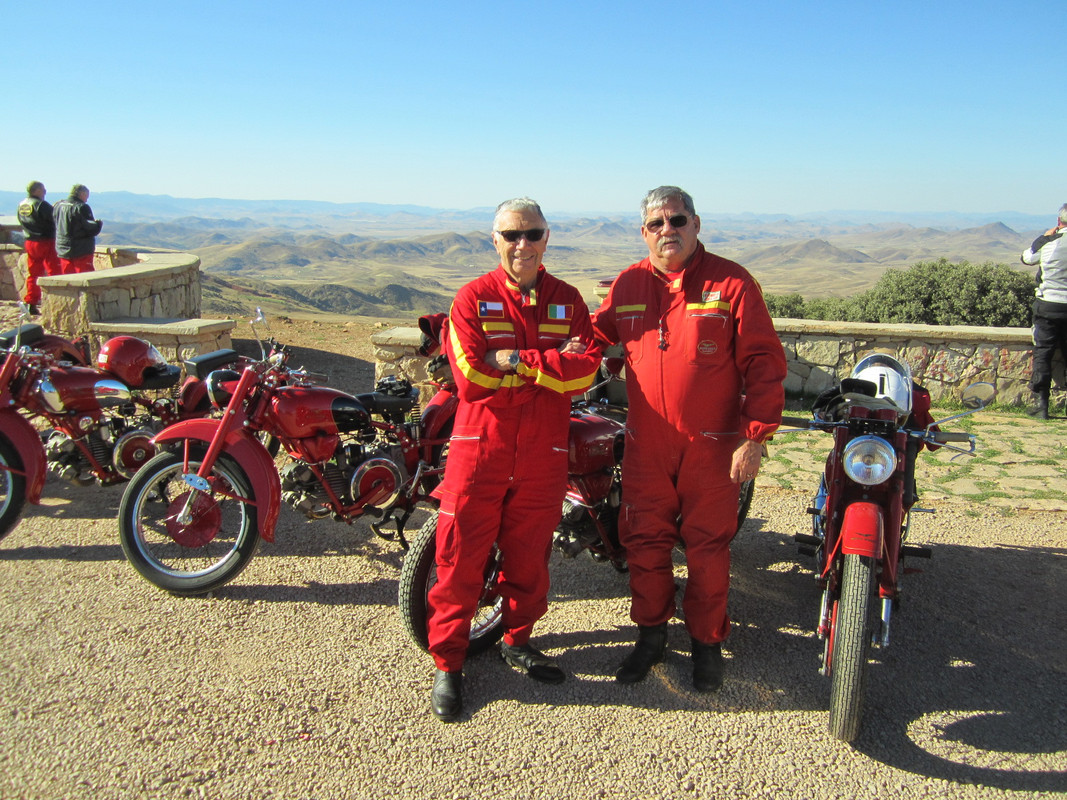
Just a few days into the tour, the Bono Falcone still looking pretty good but getting a little dirty.
Our team of riders at the sand dunes destination.
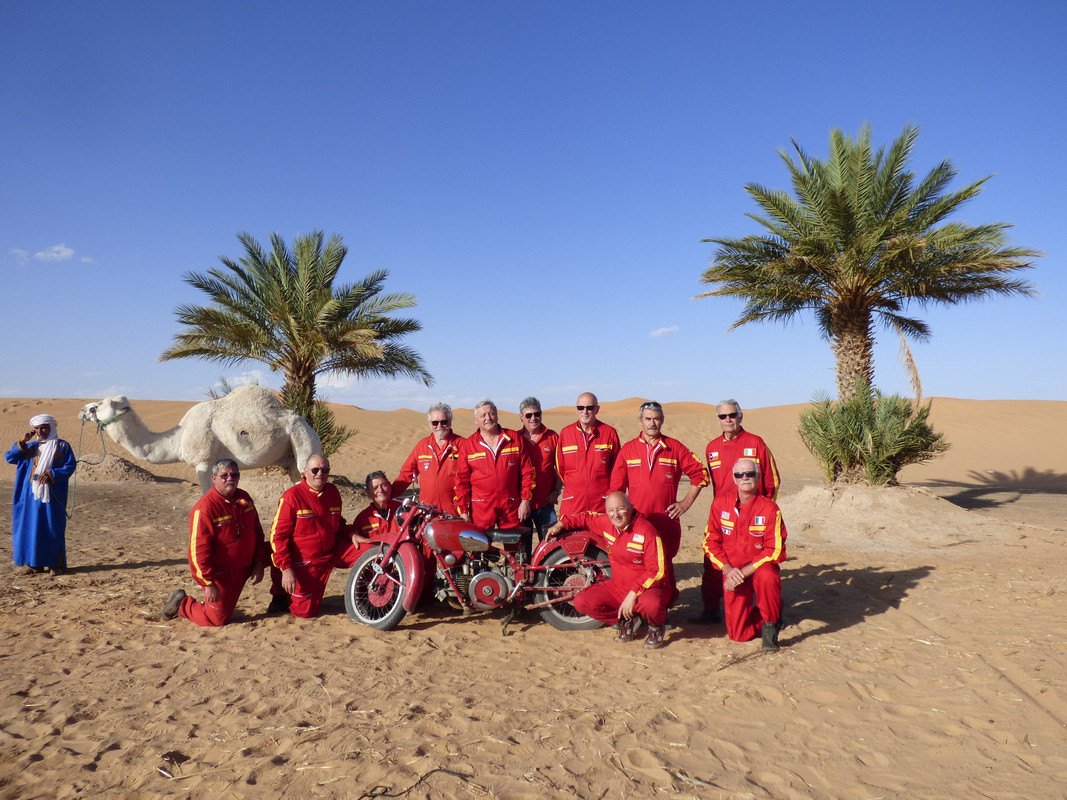
The Moroccans have taken the task of loading trucks and elevated it to an art form. If there is any way to fit another piece of cargo, they will manage to load and secure it. Secure being a somewhat variable term! Here is a daily delivery of feed hay for the tourism camels.
We had to follow this slow truck for quite some time. Took bravery to pass him. Most did it on a straightaway. I'm a chicken. I waited for my opportunity on a right leaning cambered curve.

Morocco is not yet up to modern standards on domestic water quality. We were advised to always have bottled water available for drinking and brushing teeth. The only use of domestic water was for bathing and cooking. Perhaps the main contamination risk comes from eating fruits or vegetables which have been rinsed with domestic water. Don't eat the unpeeled grapes. OK to eat the desert melon because you are only consuming the internal portion. One of our riders did succumb to a serious intestinal attack. Stopped and collapsed on the side of the road before it got bad enough for him to faint away. We had to break off from the tour and take him to a local clinic. The doctor stuck him in bed for a few hours with an IV drip for rehydration and provided a few corrective drugs. $75 cost. Fit as a fiddle the next day. The unfortunate downfall was that I became hyper-sensitive about my own innards. The least amount of intestinal tweak or noise got me thinking if I would be the next victim.
An old rural town adjacent to a lower community garden oasis. With no utilities of any sort. The government eventually built a very nearby replacement town at the other end of the oasis and moved everyone over leaving the older town abandoned. Wow, what an improvement. Even some satellite TV antennae in there. Morocco is a kingdom by rule. The population is very happy with and very proud of their King Mohammed VI. He has promoted many reforms and modernizations.
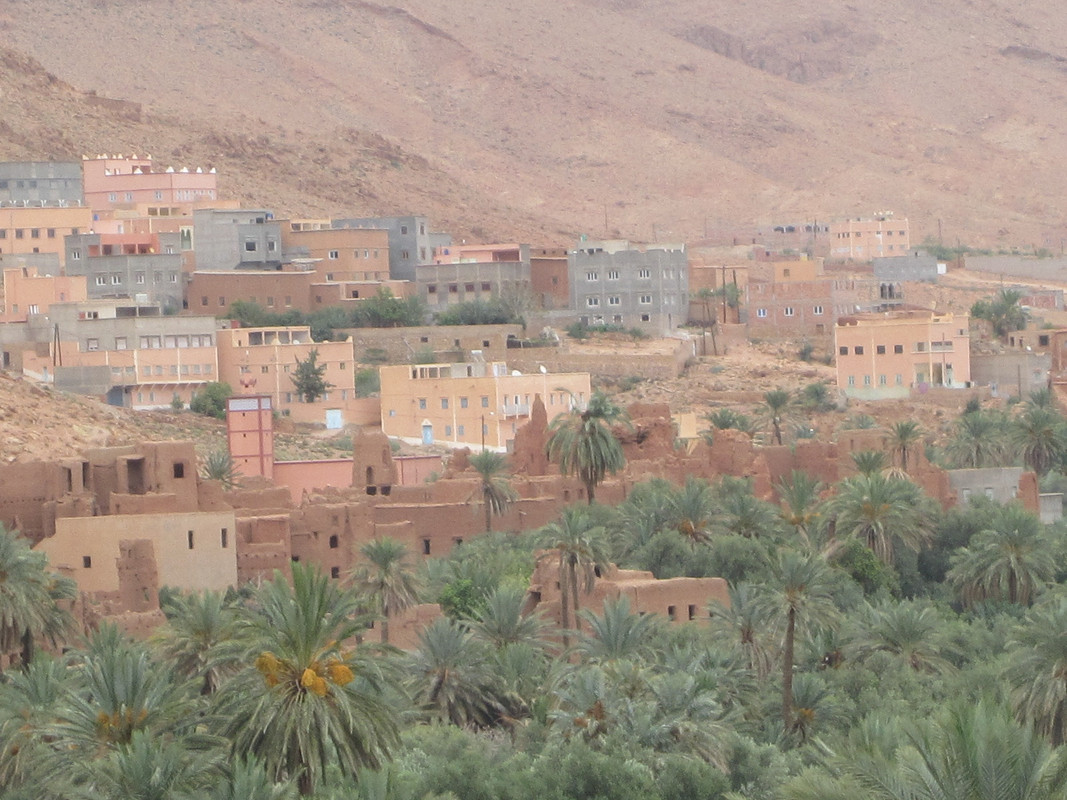
We found this character hitchhiking along a back road. Had a little fun with him before sending him on his way. Not sure he appreciated the short ride.
Over the length of the tour we confronted perhaps six or seven areas where flash flood streams were crossing the roadway in a substantial way. Sometimes with quite a bit of force that would push us off at an angle and risk running off the now invisible side of the road. This particular crossing was about 15" deep. Enough to drown my motor and force me to dismount and push to the far side. Alas, my waterproof boots are only 12" high so I had an internal flood for the remainder of the day. Took about 15 minutes to get re-started. So much for the gentle care to Bono's pristine motorbike.
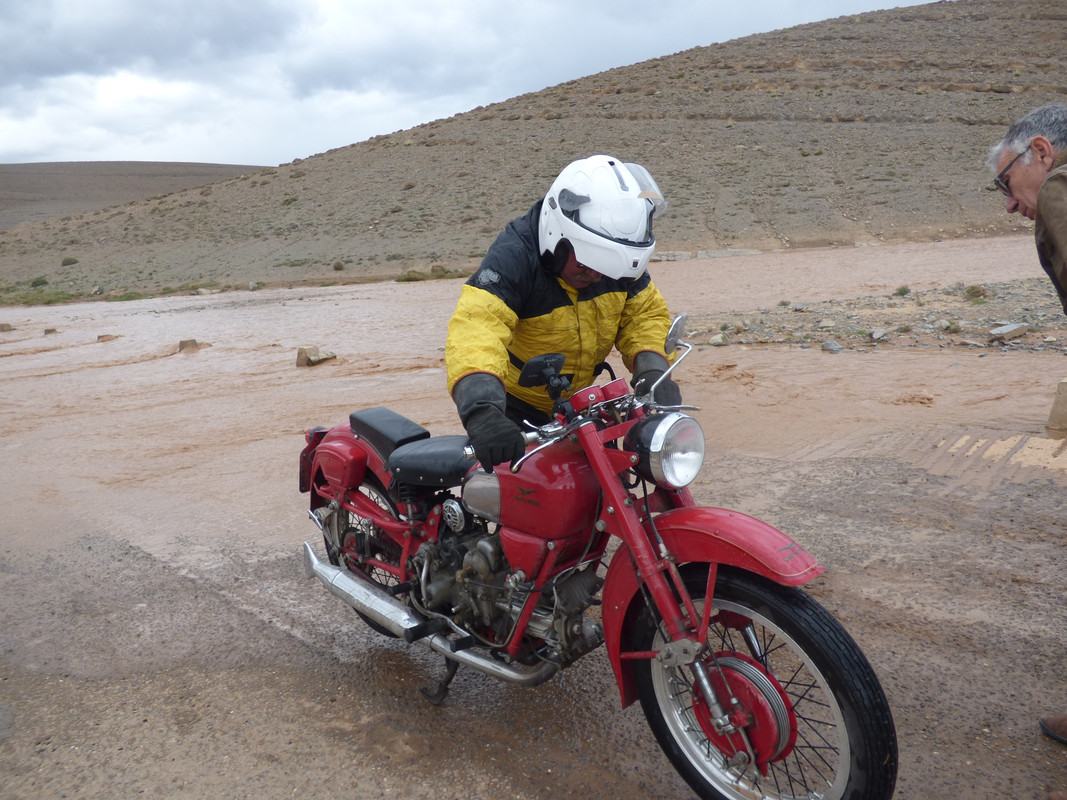
Here we have a rather typical view of a rural roadway running through town. Note that there is a substantial dirt area to each side of the pavement. This is for use by the numerous service donkeys, pedestrians, 3-wheel trucks, etc. Note also that constant truck traffic tends to break away the edges of the asphalt pavement leaving a narrow center with a stripe in it. Oncoming trucks tend to take the entire center of the road leaving you no option but to head off into the dirt. Each of these towns will have a small school. Lots of children line the streets before or after school. As you ride through, they jump to the middle of the road in order to get a 'high five' as you pass. Easy if you are traveling alone and you surprise them. Not so easy in a line of ten when they can see down the line and predict more opportunities. Quite scary. I sure don't want to run over some child in a foreign country!
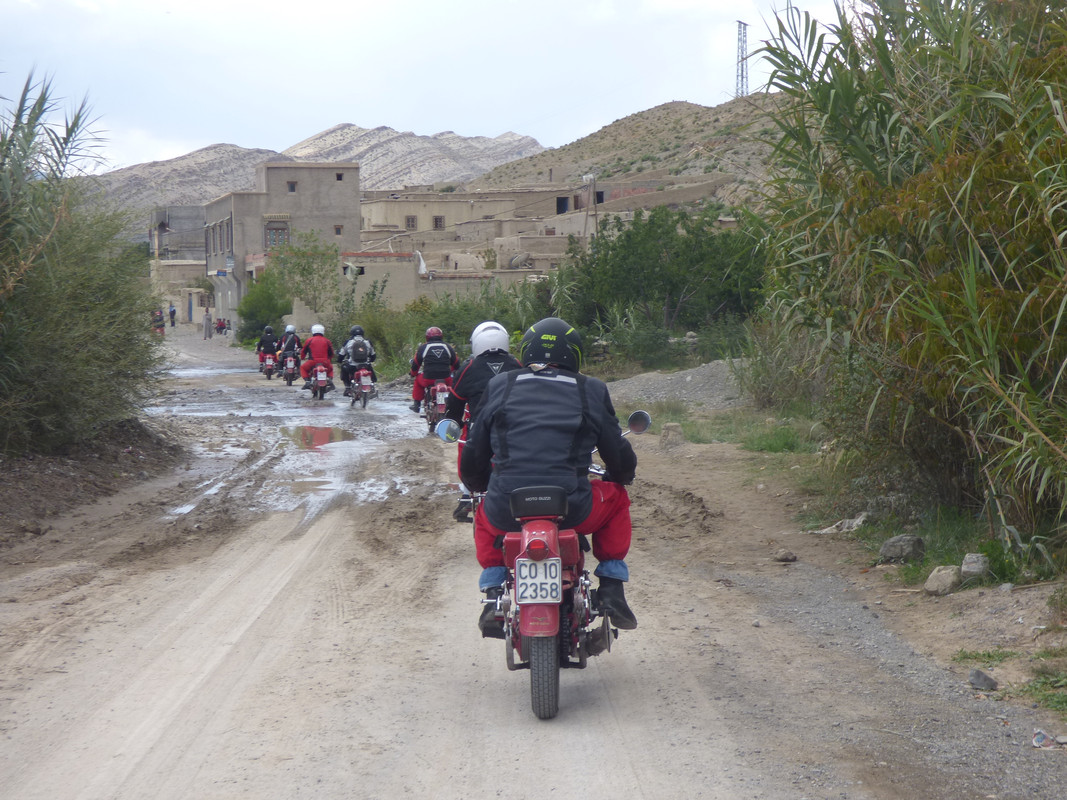
We finally met a water crossing which had completely taken away the road. We were stuck until a local wandered by and advised us about a rough, desert bypass of about five miles which would take us around the washout. How nice to have a guide who speaks Arabic!
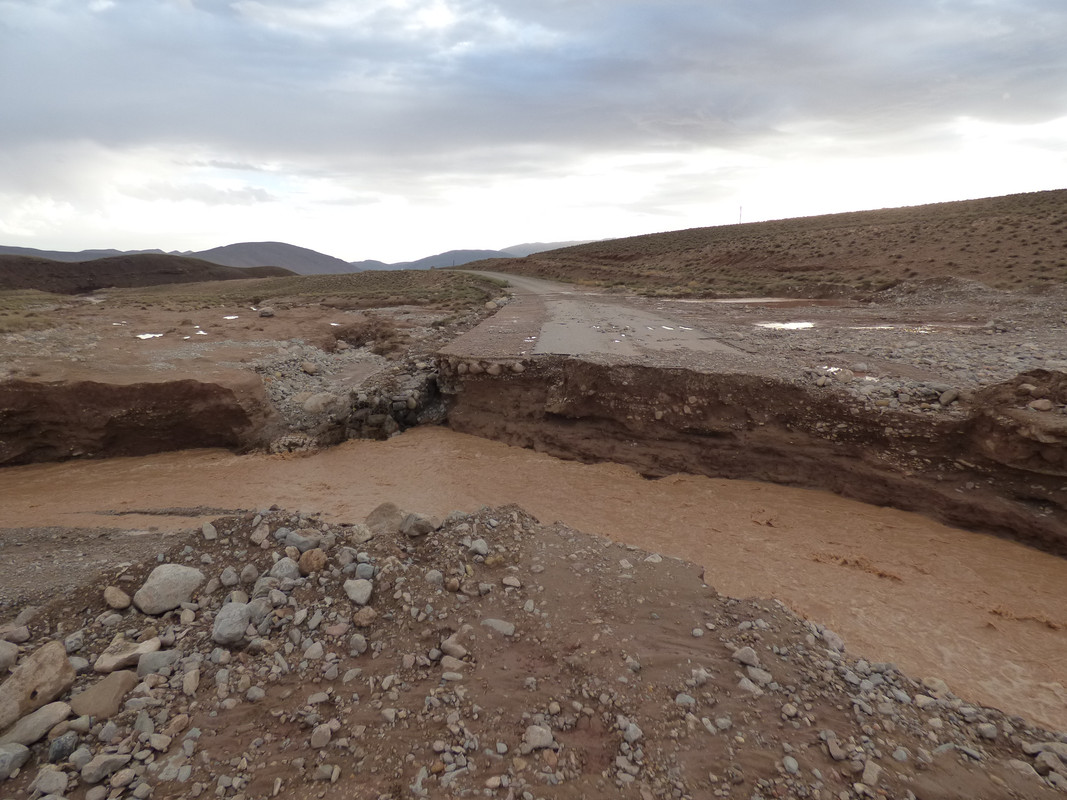
Intrepid bicycle tourists!
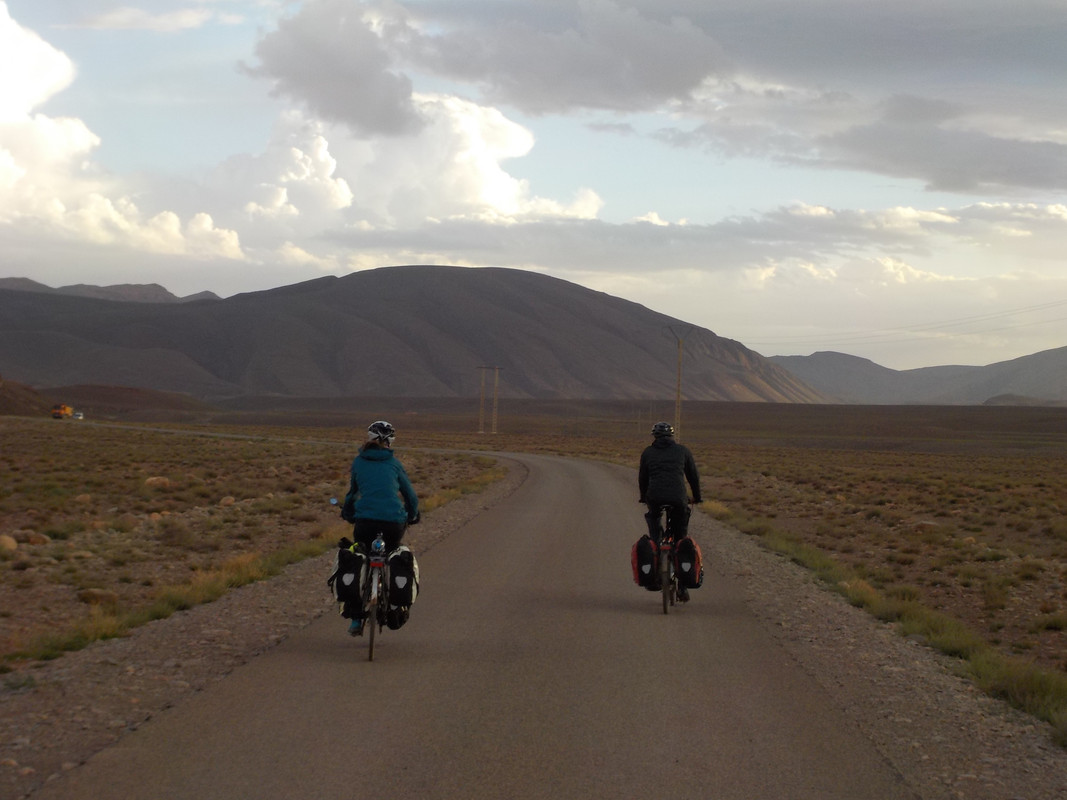
The picturesque hairpins at the head of the Dades Gorge. We had to drive up and down this section several times in order to stage a nice video of our motos on tour.
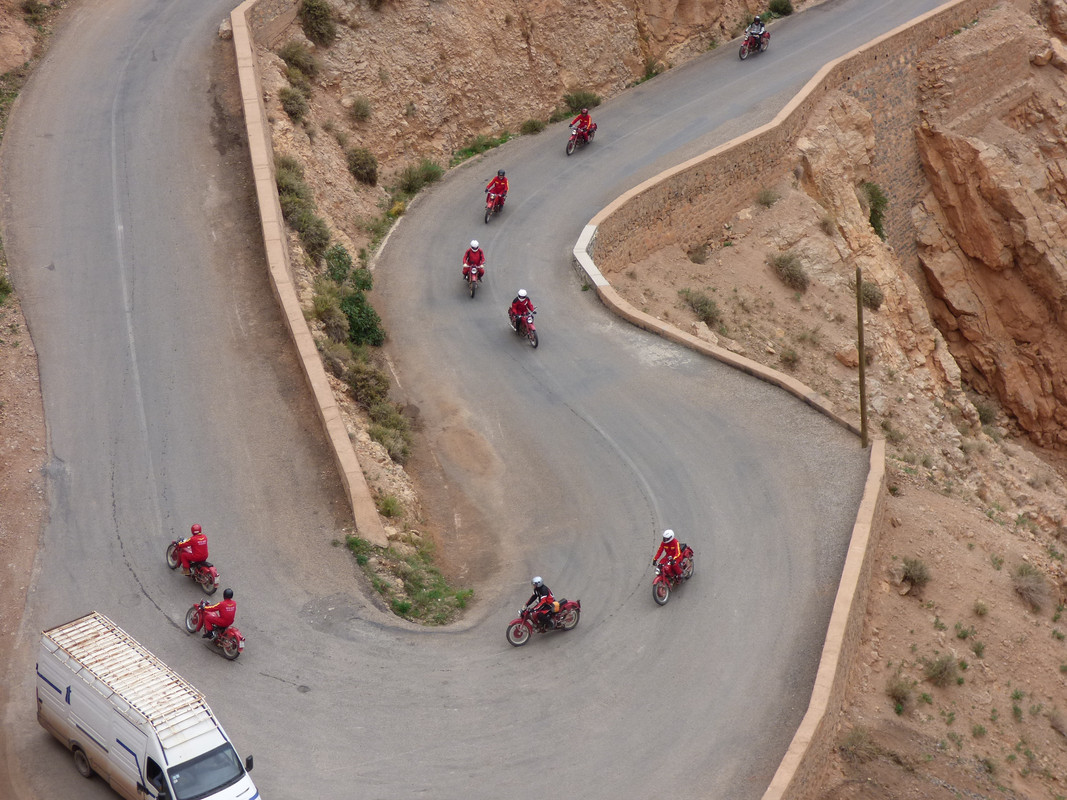
These poor little donkeys are the predominant local cargo transport. Loading one of these poor fellows is only surpassed by the way they load real trucks. Not very many rural people own motorized transport. Motorcycle based 3-wheel trucks are very common.
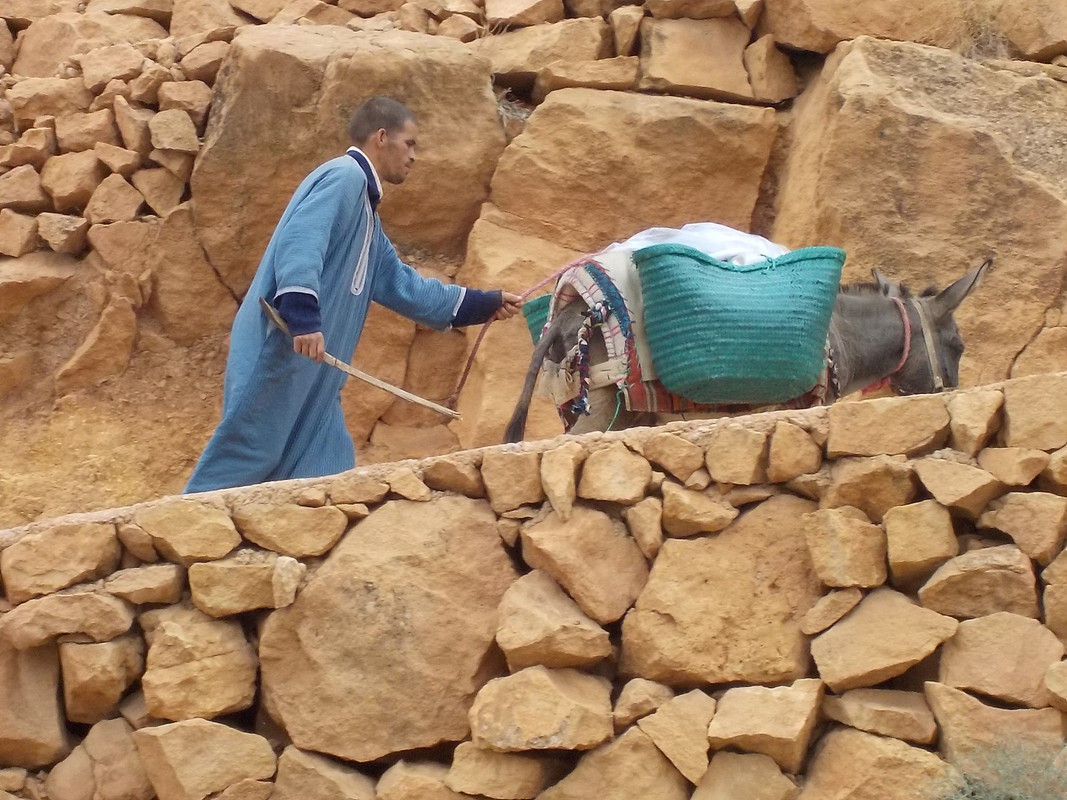
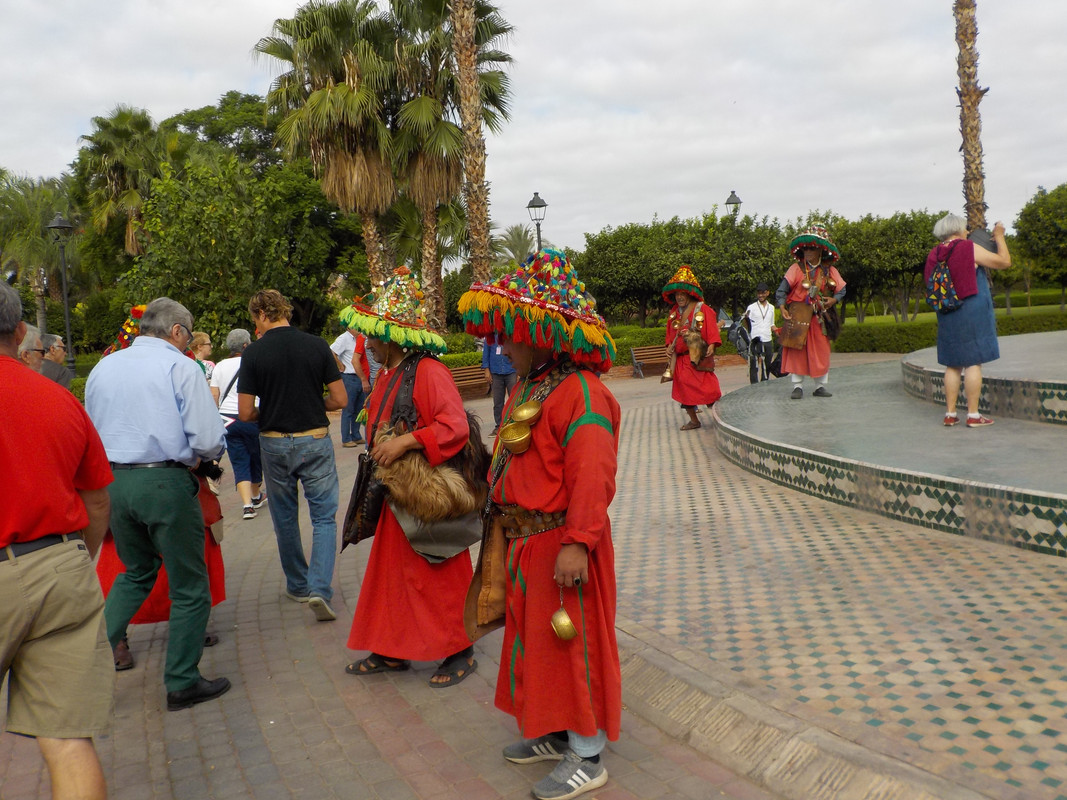
The main form of cooking utensil, the tajine. These clay pots produce daily meals of sauteed vegetables, olives, and scrambled eggs. The Berber omelet.
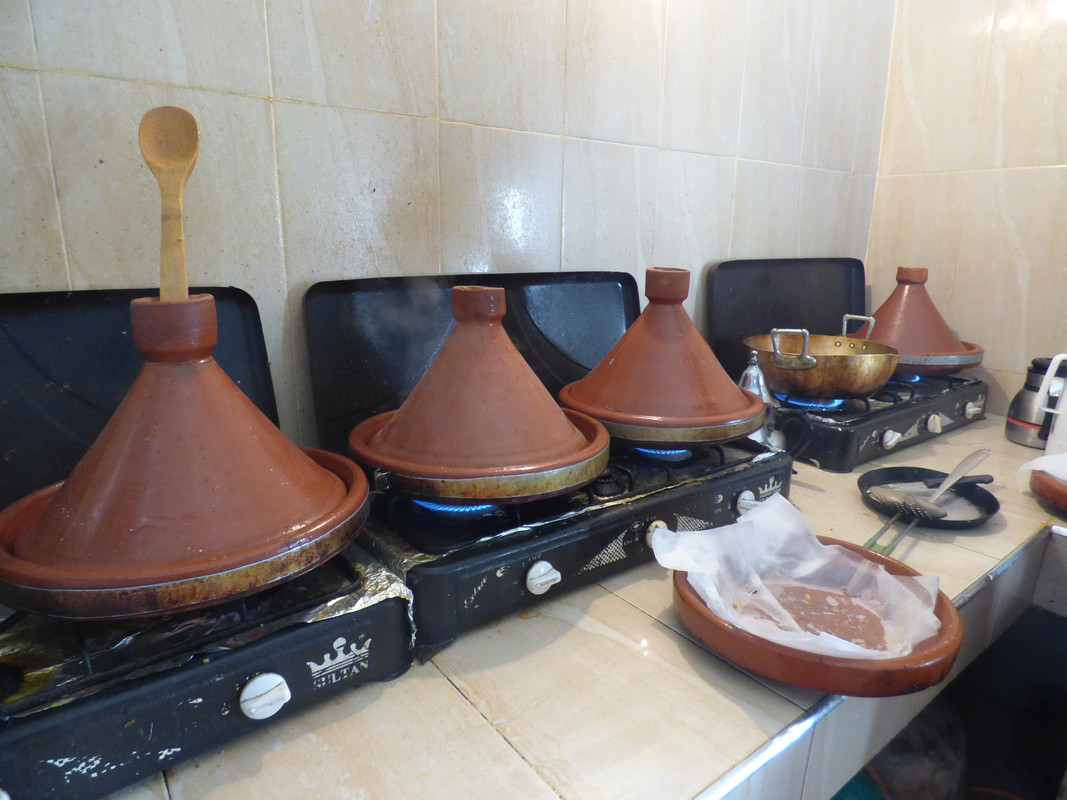
Tea is very sweet and heavily minted. Obligatory to pour it from a very high altitude and show off your aiming skills. They are actually pretty good at it and I never saw a splash or spill.

